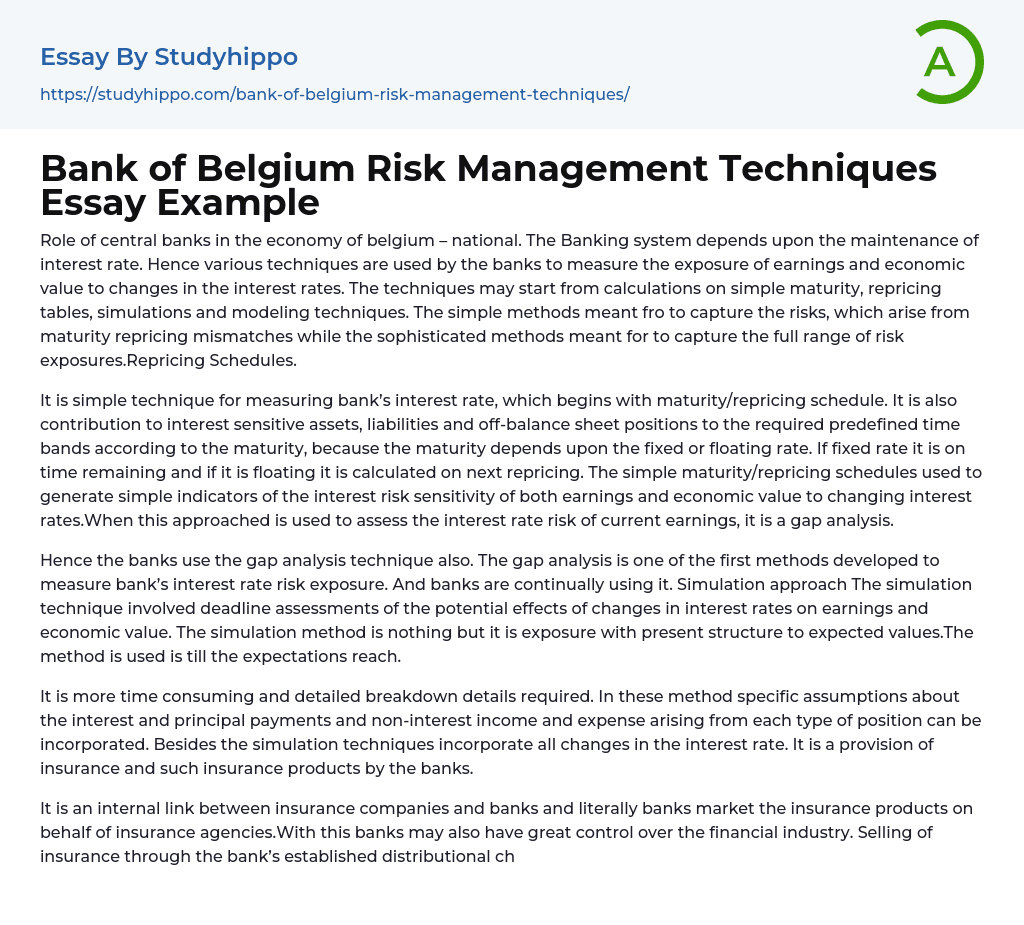Belgium's national economy relies on the role of central banks. The banking system is closely tied to the management and regulation of interest rates.
Banks employ various techniques to assess the impact of interest rate changes on earnings and economic value. These techniques include simple maturity calculations, repricing tables, simulations, and modeling. The purpose of the simple methods is to identify risks associated with maturity repricing mismatches, while the sophisticated methods aim to capture a comprehensive range of risk exposures. One such simple technique is repricing schedules, which involves categorizing interest-sensitive assets, liabilities, and off-balance sheet positions based on their maturity and fixed or floating rates. For fixed rates, the schedule is based on time remaining, while for floating rates, it is determined by the next repricing date.
Both earnings and economic value are assessed for interest rate risk sensitivity u
...sing simple maturity/repricing schedules. This approach, known as gap analysis, is widely utilized by banks to measure and monitor their interest rate risk exposure. Gap analysis is considered one of the initial methods developed for this purpose, and banks consistently employ this technique.
The simulation approach utilized in this study involves assessing the potential impact of interest rate changes on earnings and economic value. This simulation method exposes the present structure to expected values, with expectations being continuously adjusted until they are met. This approach can be time-consuming and requires a detailed breakdown of specific assumptions regarding interest and principal payments, as well as non-interest income and expenses associated with each position. Additionally, simulation techniques encompass all changes in interest rates and can be considered a form of insurance provided by banks.
Insurance products are marketed by banks o
behalf of insurance agencies, creating an internal link between the two industries. This allows banks to have significant control in the financial industry. Through their established distribution channels, banks can sell insurance and also provide banking, lending, and investment products to customers.
- Commercial Bank essays
- Debit Card essays
- Deposit Account essays
- Subprime Lending essays
- Bank essays
- Banking essays
- Corporate Finance essays
- Credit Card essays
- Currency essays
- Debt essays
- Donation essays
- Enron Scandal essays
- Equity essays
- Financial Accounting essays
- Financial Crisis essays
- Financial News essays
- Financial Ratios essays
- Financial Services essays
- Forecasting essays
- Foreign Exchange Market essays
- Free Market essays
- Gold essays
- Investment essays
- Legacy essays
- Loan essays
- Market Segmentation essays
- Money essays
- Personal finance essays
- Purchasing essays
- Retirement essays
- Shareholder essays
- Stock Market essays
- Supply And Demand essays
- Venture Capital essays
- Aviation essays
- Emergency Management essays
- Health Insurance essays
- Insurance essays
- Life Insurance essays
- Public Transport essays
- Transportation essays
- Board Of Directors essays
- Brand Management essays
- Business Ethics essays
- Business Management essays
- Change Management essays
- Comparative Analysis essays
- Decision Making essays
- Dispute Resolution essays
- Knowledge Management essays




